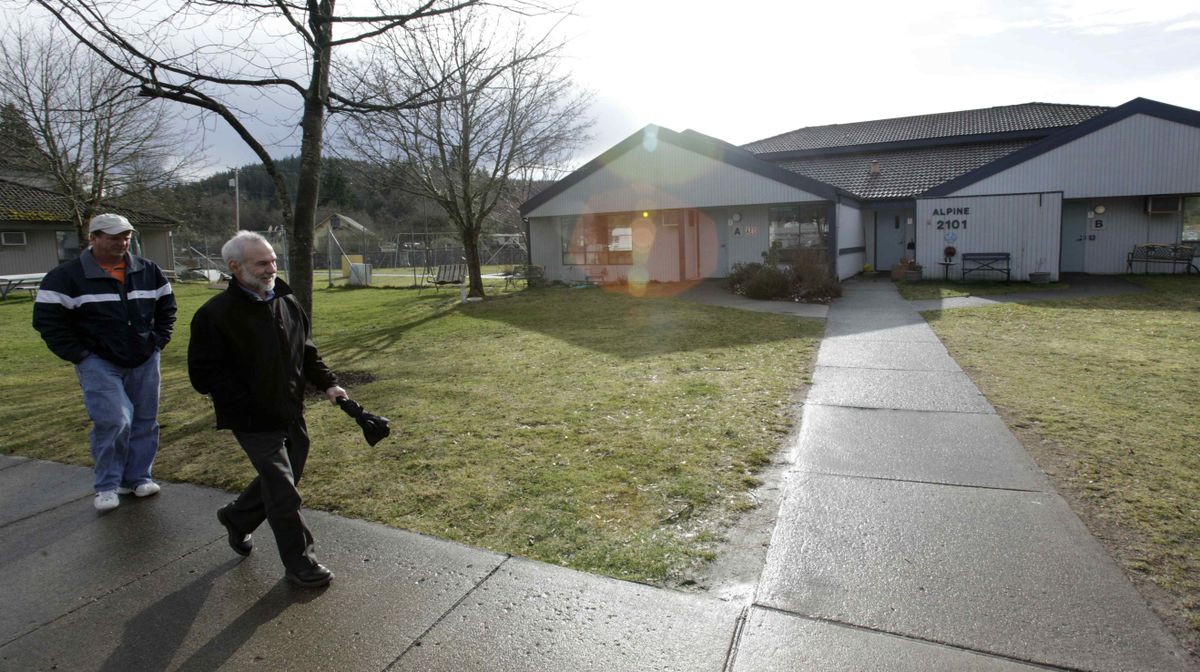Rainier School on closure list
Supporters dig in to buck trend, save 71-year-old facility

BUCKLEY, Wash. – Larry Butts first set foot on the Rainier School campus the day it opened in 1939, when he was just 6 years old.
Seventy-one years later, he could be forced out of the only home he’s ever known if lawmakers decide to close the Buckley facility he shares with nearly 400 other developmentally disabled patients.
In the past seven decades, the Rainier School’s population has dwindled from almost 2,000 patients as most developmentally disabled people find care in smaller community settings. The state is looking to follow a national trend away from large campuses like Rainier School to state-sponsored care in family homes and smaller facilities in residential areas.
Gov. Chris Gregoire has called for closing the Rainier School, along with Frances Haddon Morgan Center in Bremerton, to help reduce a $2.8 billion budget deficit.
“It is very upsetting to the families of the folks who live here,” Rainier School Superintendent Neil Crowley said. “They love the place and feel that Rainier School should be here forever. But the fact of the matter is, in most states, the care is in the communities.”
Supporters say the closures would integrate patients in communities instead of having them live on campuses set apart from the rest of society. Opponents say the closure will rip residents away from a home where they have lived for decades and away from the care they need.
Lakewood resident Bob Gee’s daughter Angela has been a resident of Rainier School for more than two decades. Twice, he moved Angela to a smaller institution. Both times, he said, she almost died from seizures because there were not enough employees to watch over her 24 hours a day.
“It’s very admirable to believe that they could live on their own, but when you have someone with the ability of a 2-year-old or 3-year-old, it’s wishful thinking,” he said. “It’s naive and it’s deadly to believe that these people can be integrated into society.”
Gregoire’s office acknowledges that closing the state’s facilities will actually cost the state more than keeping them open at first, because the state will pay to move patients to other care. But proponents say that over time, community care will cost 30 percent less.
The disability rights organization Arc of Washington has been advocating the closures for years, arguing that community-based care is more dignified and better integrates patients into society.
“It really is a civil rights issue,” Arc executive director Sue Elliott said. “We believe people should live in their own communities.”
But political obstacles have helped save the school from repeated proposals to close it. Buckley Mayor Pat Johnson said there are almost 1,000 jobs at the school, which include 400 households in and around the Pierce County town. Closing it would cause the city to lose $2 million per year in tax revenue.
“That is a huge chunk of change for the city of Buckley,” Johnson said.
The state has about 37,000 developmentally disabled citizens, and only about 900 are cared for in state-operated institutions, Crowley said. About 4,000 reside in community-based care facilities.
At Rainier, providing 24-hour care requires about three employees for every resident. The Frances Haddon Morgan Center has 53 residents with 130 staff members.
Three similar institutions – the Yakima Valley School in Selah, Lakeland Village in Medical Lake, and Fircrest Resident Habilitation Center in Shoreline, which house about 550 residents total – would stay open under the governor’s proposal but might be targeted when the House and Senate release their budget proposals.
At its peak, Rainier School housed about 1,900 patients on its 88-acre property. It cut 100 jobs last year. Some buildings are empty and the swimming pool and other facilities sit unused because of the cost of maintenance.
The possible closure has caused the facility’s staff, family members of patients and the area’s politicians to organize.
The debate over the closure will likely last until the end of the legislative session in March. Advocates and opponents have packed committee hearings on the budget and on a separate bill that would order the Department of Social and Health Services to create a plan to close all state institutions by 2014.
Sen. Karen Keiser, the bill’s sponsor, said the state’s focus on big facilities is not sustainable, and spends most of the available money to support a fraction of the developmentally disabled population. The goal of the bill is to look more closely at the care each patient needs, she said.